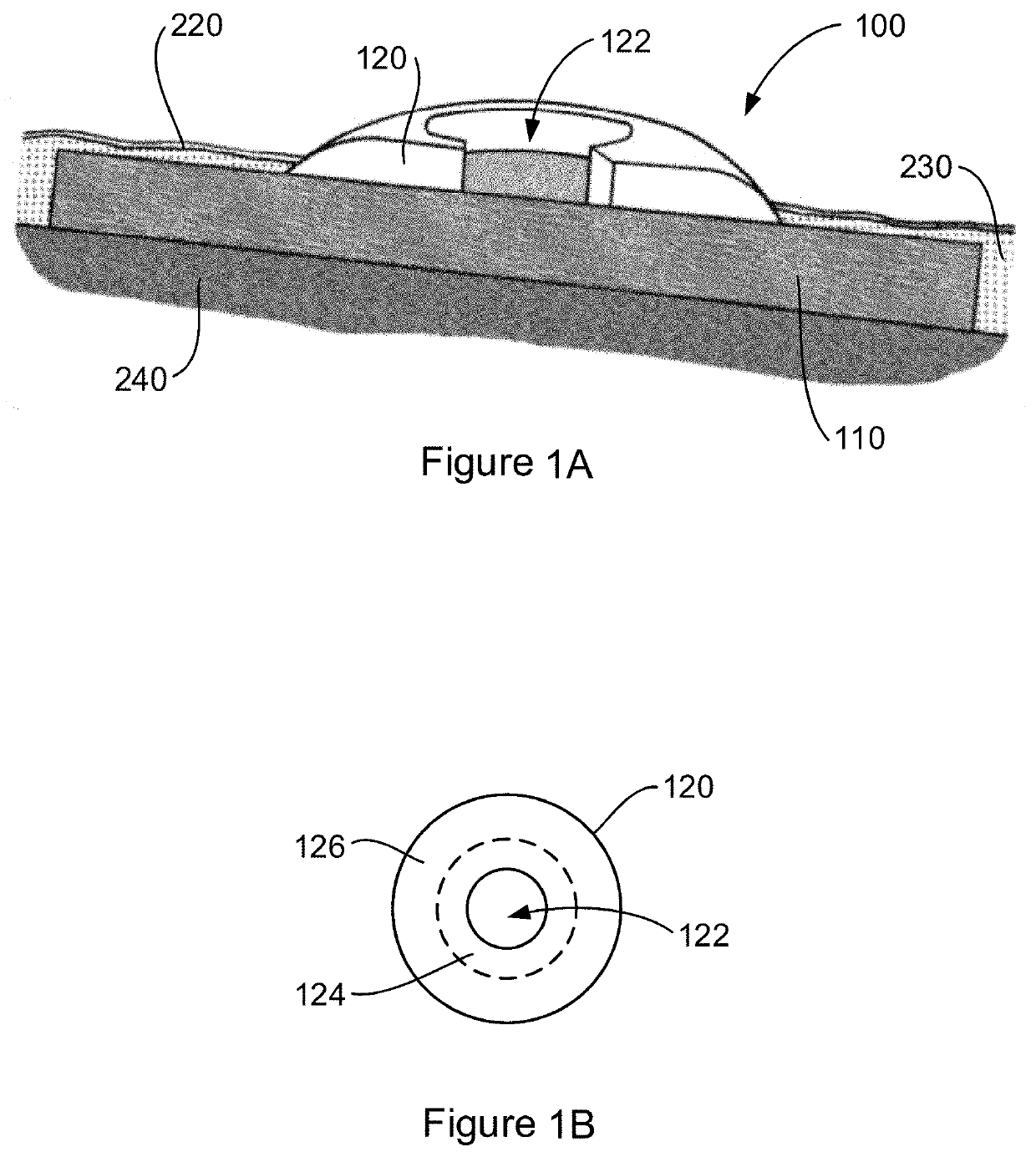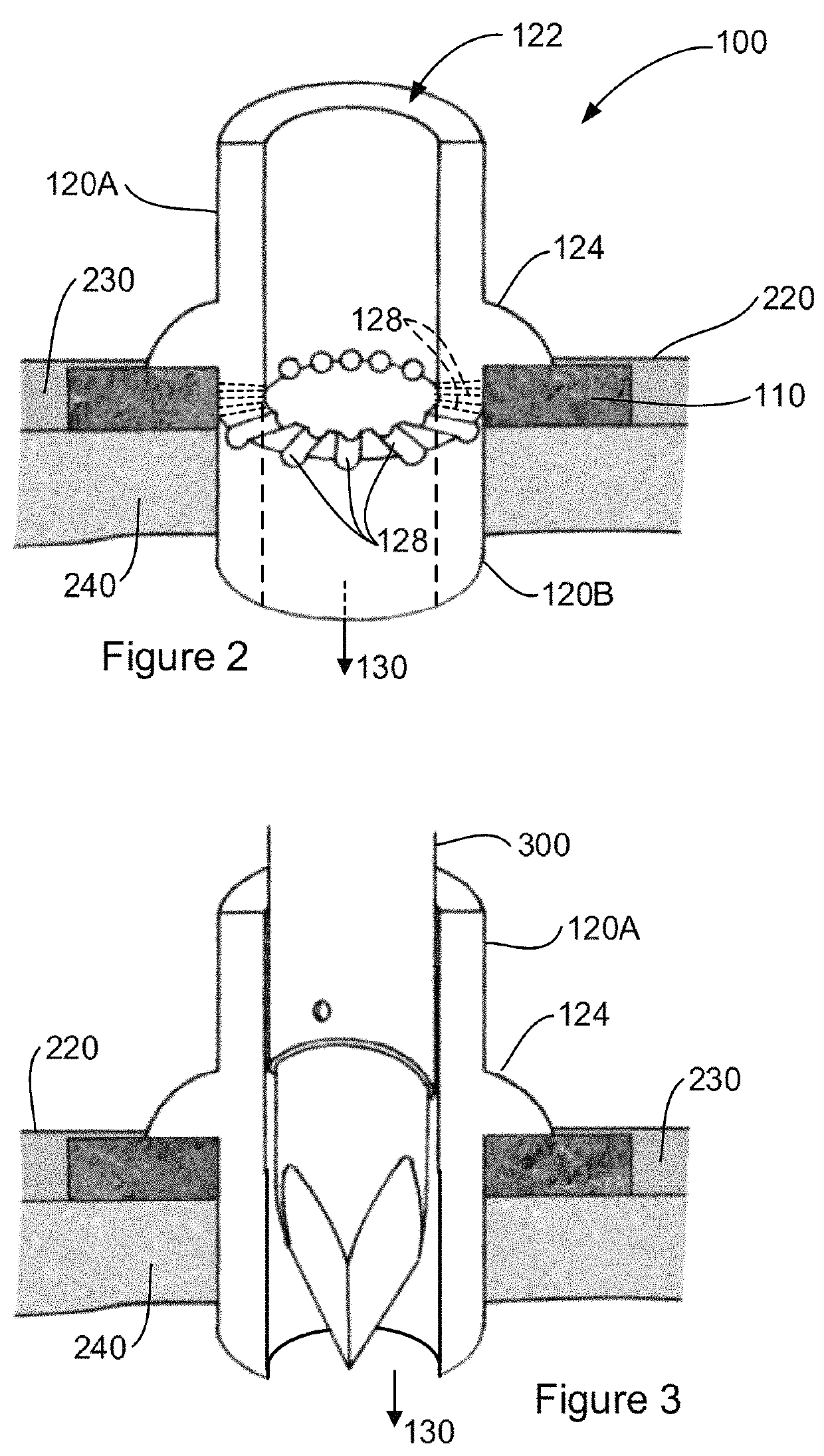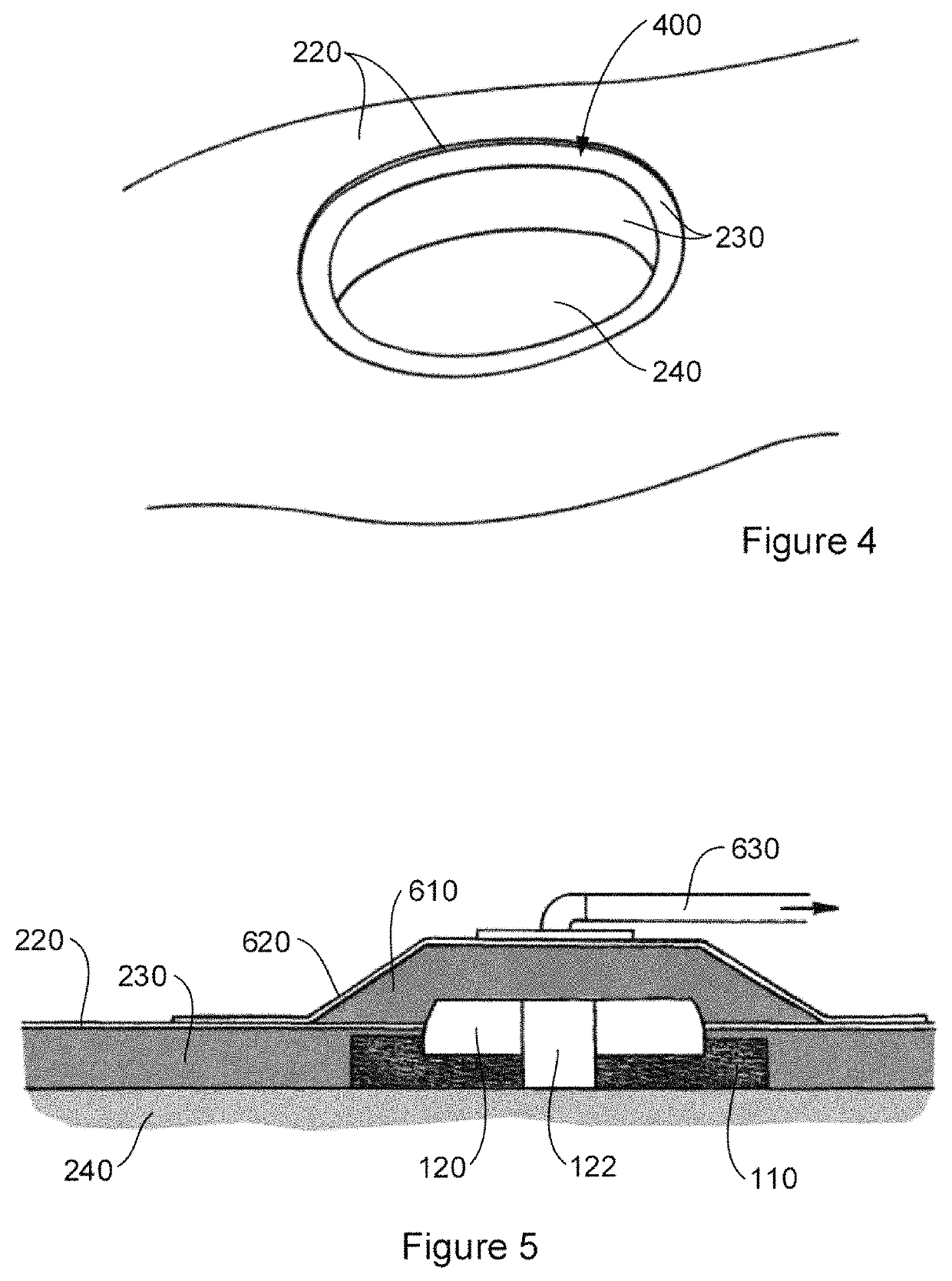Implantable interface device
a technology of implantable devices and interfaces, applied in the field of implantable devices, can solve the problems of unsolvable problems, failure of implantable devices that breach the skin, and failure of permanent, robust and infection-free design and implantation methods, and achieve the effect of limiting the ongoing tissue integration into the porous structure and reducing the death of fibroblasts
- Summary
- Abstract
- Description
- Claims
- Application Information
AI Technical Summary
Benefits of technology
Problems solved by technology
Method used
Image
Examples
Embodiment Construction
[0051]Various embodiments and features of the invention are discussed herein by reference to the drawings which are not to scale and are intended merely to assist with explanation of the invention. Referring firstly to FIG. 1A, there is shown an interface device 100 for implantation in a subject. In particular, the implant device 100 is shown implanted in a subject's skin, specifically the epidermis 220, dermis 230, and subcutaneous tissue 240.
[0052]The device includes a tissue integration layer 110 that has a macroporous structure adapted for ingress of dermal tissue 230 and subcutaneous tissue 240 to anchor the device in place when implanted. The interface device 100 also includes a crowning element 120 which is adapted for location, in the example shown, in at least the epidermis 220 although the thickness of the crowning element may also necessitate placement at least in part in the dermis 230 as shown. Placement of at least part of the crowning element 120 in the epidermis 220 ...
PUM
 Login to View More
Login to View More Abstract
Description
Claims
Application Information
 Login to View More
Login to View More - R&D
- Intellectual Property
- Life Sciences
- Materials
- Tech Scout
- Unparalleled Data Quality
- Higher Quality Content
- 60% Fewer Hallucinations
Browse by: Latest US Patents, China's latest patents, Technical Efficacy Thesaurus, Application Domain, Technology Topic, Popular Technical Reports.
© 2025 PatSnap. All rights reserved.Legal|Privacy policy|Modern Slavery Act Transparency Statement|Sitemap|About US| Contact US: help@patsnap.com



